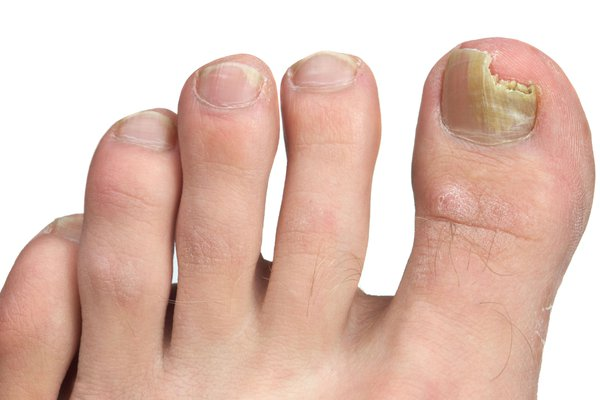
How to Heal a Toe Infection Without Antibiotics
How to Heal a Toe Infection Without Antibiotics
A toe infection can be painful and uncomfortable, often leading to swelling, redness, and pus. While antibiotics are commonly prescribed to treat infections, many people prefer to explore natural remedies first. Healing a toe infection without antibiotics is possible, but it requires attention and care. This blog post will guide you through effective home remedies and preventive measures to help you recover and maintain healthy feet.
1. Soaking Your Foot in Warm Salt Water
One of the simplest and most effective ways to heal a toe infection is by soaking your foot in warm salt water. Epsom salt, in particular, can help reduce inflammation and draw out the infection. The warm water helps improve blood circulation, promoting faster healing. Here’s how to do it:
- Fill a basin with warm water and add about 1-2 tablespoons of Epsom salt.
- Soak your foot for 15-20 minutes, twice a day.
- Dry your foot thoroughly afterward, as moisture can worsen the infection.
This method is particularly helpful for infections caused by ingrown toenails or minor cuts, as it gently cleanses the area and reduces swelling.
2. Applying Tea Tree Oil
Tea tree oil is a powerful natural antiseptic and antifungal agent. It has been used for centuries to treat skin infections, including those on the toes. Its antibacterial properties help fight off the infection, while its anti-inflammatory effects reduce pain and swelling.
- Dilute a few drops of tea tree oil in a carrier oil, such as coconut or olive oil.
- Apply the mixture directly to the infected area with a cotton swab, 2-3 times a day.
- Make sure to wash your hands before and after application to avoid spreading the infection.
Tea tree oil is potent, so diluting it is essential to prevent skin irritation. If you experience any burning or discomfort, discontinue use.
3. Using Apple Cider Vinegar
Apple cider vinegar is another excellent remedy for treating toe infections naturally. Its acidic properties can help kill harmful bacteria and fungi, while also restoring the skin’s natural pH balance.
- Mix equal parts apple cider vinegar and water.
- Soak a cotton ball in the solution and apply it to the infected toe.
- Leave it on for 20-30 minutes, then rinse and dry your foot thoroughly.
For added effectiveness, you can also add a cup of apple cider vinegar to your warm water foot soak. This method is ideal for fighting off mild infections or preventing them from worsening.
4. Garlic as a Natural Antibiotic
Garlic contains allicin, a compound with strong antibacterial, antifungal, and antiviral properties. Applying garlic directly to the infected area can help clear up a toe infection without the need for synthetic antibiotics.
- Crush a few garlic cloves to release their natural oils.
- Apply the crushed garlic to the infected area and cover it with a clean bandage.
- Leave it on for 20-30 minutes, then remove and wash the area thoroughly.
Repeat this process daily until the infection subsides. Garlic can cause some irritation, so if you notice excessive redness or discomfort, reduce the application time or try another remedy.
5. Turmeric for Inflammation
Turmeric is known for its anti-inflammatory and antimicrobial properties, making it a great option for treating infections. Curcumin, the active compound in turmeric, helps reduce swelling and fight bacteria.
- Mix turmeric powder with water or coconut oil to form a paste.
- Apply the paste to the infected toe and leave it on for 20-30 minutes.
- Rinse it off and pat the area dry.
You can also consume turmeric internally to boost your body’s immune response. Add it to your meals or take turmeric supplements to aid healing from within.
6. Boosting Your Immune System with Vitamins
A strong immune system is essential for fighting off infections naturally. Ensuring you’re getting enough vitamins and nutrients can help your body heal a toe infection more quickly.
- Vitamin C: Boosts immune function and promotes faster healing of wounds.
- Zinc: Helps the immune system fight bacteria and viruses.
- Vitamin E: Promotes skin repair and reduces inflammation.
Incorporating foods rich in these vitamins into your diet can support your body’s natural ability to heal. Citrus fruits, leafy greens, nuts, and seeds are excellent sources of these immune-boosting nutrients.
7. Using Aloe Vera for Healing
Aloe vera has soothing and antimicrobial properties, making it a great option for treating toe infections. It helps reduce pain and swelling while promoting faster skin regeneration.
- Apply fresh aloe vera gel to the infected area.
- Leave it on for 15-20 minutes, then rinse it off and dry your toe.
- Repeat this process 2-3 times a day until the infection improves.
Aloe vera is gentle on the skin and can be especially helpful for sensitive areas around the toes.
8. Maintaining Proper Foot Hygiene
Preventing toe infections from worsening or recurring requires diligent foot hygiene. Here are some key steps to follow:
- Wash your feet daily: Use mild soap and warm water to keep your feet clean.
- Trim your toenails properly: Cut nails straight across to avoid ingrown toenails, which can lead to infections.
- Keep your feet dry: Moisture can encourage bacterial and fungal growth. Make sure to dry your feet thoroughly after bathing or soaking.
- Wear breathable shoes: Choose footwear that allows air circulation to keep your feet dry and free from excess moisture.
These simple practices can go a long way in preventing and treating toe infections.
9. When to Seek Medical Attention
While natural remedies can be highly effective, there are times when you may need to consult a healthcare professional. If the infection does not improve within a week or worsens, it’s essential to seek medical advice. Signs that you may need additional treatment include:
- Increasing pain, redness, or swelling
- Pus that continues to drain
- A fever or chills
- Difficulty walking
In some cases, an infection may require more advanced medical intervention. However, using these natural remedies can help you manage the infection in the early stages and potentially avoid the need for antibiotics.
Conclusion
Learning how to heal a toe infection without antibiotics is not only possible but also empowering. With the right care and attention, natural remedies like saltwater soaks, tea tree oil, and garlic can effectively treat mild to moderate infections. Along with proper foot hygiene and immune support, you can promote healing and keep your feet healthy. If symptoms persist or worsen, don’t hesitate to seek professional help to ensure a full recovery.









